|
|
Fabrication Technologies of Quantum Dots
| Formation of High-uniformity and High-density Quantum Dots for Optical Fiber Communication |
| Growth technologies for high-uniformity and high-density quantum dots (QD) are investigated, while searching for the QD evolution mechanism. We have developed highly uniform QDs at 1.32Êm, high-density of 10-11cm-2 by Sb technology, and using an InGaAs layer, 1.52Êm at room temperature with extremely narrow FWHM of 15.9meV. Moreover, for the first time in the world, we have succeeded in atomic-level observation of InAs QD formation on GaAs (001) using STM within an MBE growth chamber.mUniv. Tokyon |
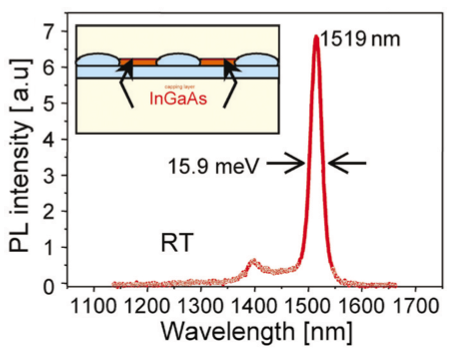 |
| Fig.1 High uniformity QD for 1.55Êm band |
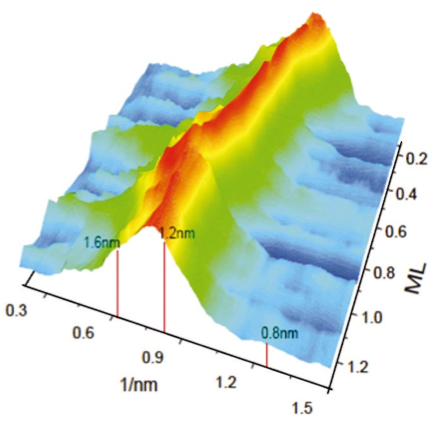 |
| Fig.2 Fourier power spectra obtained directly fro STM images during QD growth |
Fabrication Technologies of Photonic Nanostructures
| High Temperature Operation of Single Photon Sources Using GaN Quantum Dots |
| Optical properties of hexagonal GaN quantum dots are determined by the strong built-in electric field which originates from piezoelectricity and pyroelectricity. We have observed size-dependent radiative lifetime and negative biexciton binding energy. Furthermore, the large confinement potential enables us to observe emission lines from single quantum dots at higher temperatures. As a consequence, we have realized the reduction of multi-photon generation under optical pulsed excitation up to 200K compared with a Poissonian souce.mUniv. Tokyo, Stanford Univ.n |
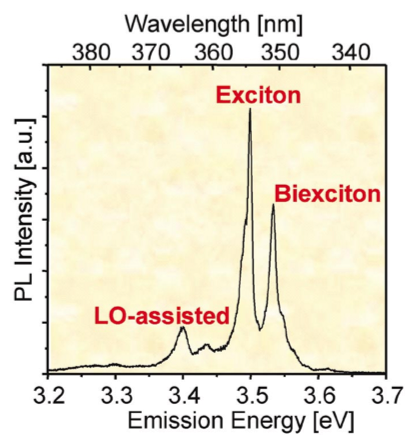 |
| Fig.1 PL spectrum at low temperature |
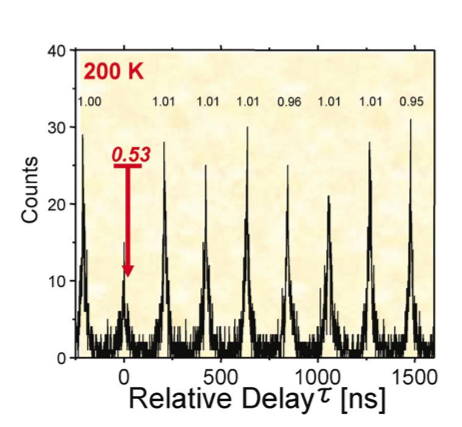 |
| Fig.2 Observed photon correlation histogram |
Fabrication Technologies of Photonic Nanostructures
| Single-electron Tunneling Spectroscopy and Spin States in Self-assmebled InAs Coupled Quantum Dots |
| Self-assembled quantum dots (SAQDs) are attractive for potential applications to charge-and spin-based quantum information processing. However, the electronic property is not yet well studied. We use a vertical single-electron transistor incorporating coupled InAs SAQDs to study the single-electron tunneling spectrum. We have observed molecular phase in a single pair of strongly coupled SAQDs. In more strongly coupled SAQDs, we have observed Hund's rule and derived the bgb factor of around 1mUniv. Tokyon |
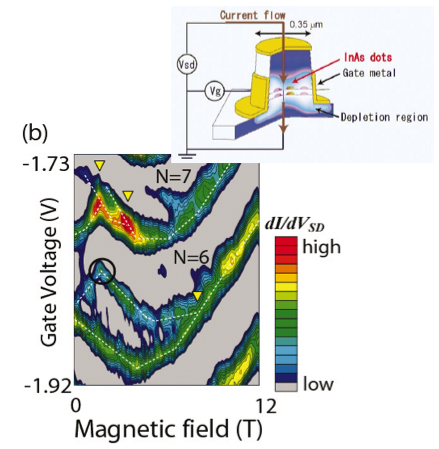 |
| Fig.1 Ground and excited states in strong coupled InAs SAQDs |
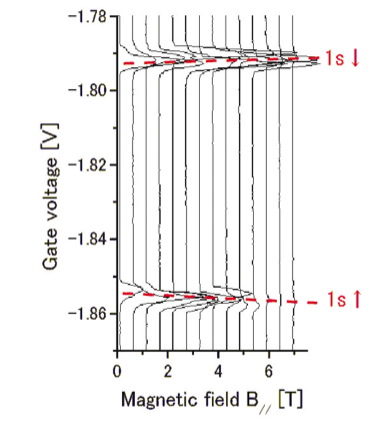 |
| Fig.2 Zeeman splitting in strongly coupled InAs SAQ |
Manipulation of Electrons and Photons in Nanostructures
| Development of Ultra-high-Q Photonic Nanocavity |
| World-beating confinement of light in an ultrasmall nanocavity with the size of an optical wavelength has been realized. The result should accelerate studies of fields such as future quantum communication and information technology. Interactions between light and matter can be dramatically increased inside such a small cavity, but it is very difficult to confine light because leakage becomes more important. We have proposed a novel design concept of "Gaussian Confinement". Using this idea, we have built a cavity having 10-100x better light confinement properties than any previously construmKyoto Univ.] |
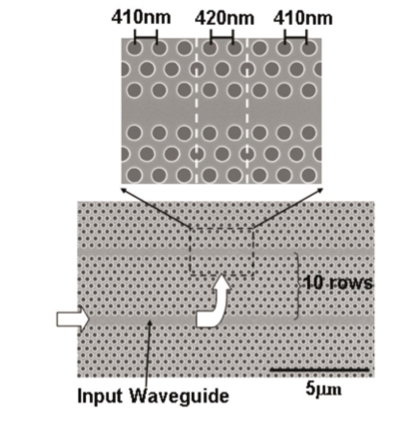 |
| Fig.1 Ultra-high-Q nanocavity |
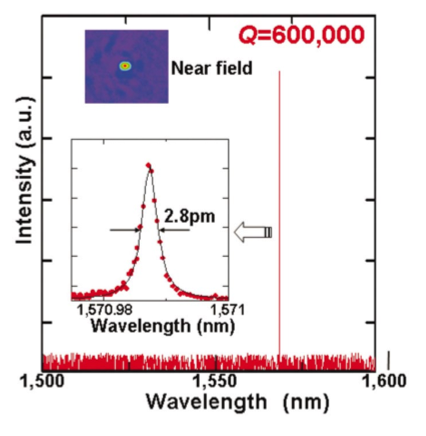 |
| Fig.2 Resonant spectrum of nanocavity shown in Fig 1 |
Manipulation of Electrons and Photons in Nanostructures
| Micromechanical Control of Photonic Crystal Devices |
| Control of optical properties of photonic crystals is a key issue for many applications such as ultra small optical integrated circuits based on photonic crystal technology. Micromechanical control using MEMS is one of promising ways to achieve high tunability in photonic crystals. We have successfully demonstrated micro-electromechanical control of the transmittance of photonic crystal waveguides for the first time. A maximum exitation ratio of 10 dB was obtained. [Univ. Tokyo, NEC] |
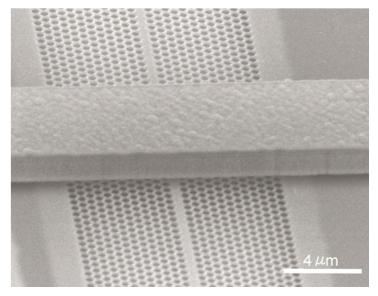 |
| Fig. 1 SEM image of the central part of a MEMS-integrated PC waveguide. |
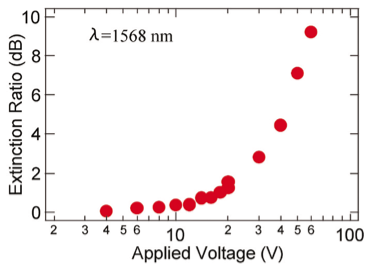 |
| Fig. 2 Extinction ratio of transmittance as a function of applied voltage. |
Development of Nano-Photonic and Electron Devices
| Uncooled and Current-regulation-free Operation of Quantum Dot Lasers |
| We have developed quantum dot lasers operating at 10 dB/s without cooling nor current-adjustment for low cost and low-power-cnsumption light sources for optical communication networks. With 10 dB/s modulation, the output power fluctuate within 5 % and the extinction ratios of the eye diagram are 7 dB in the temperature range from 20 C to 70 C. These are due to the discrete energy levels of quantum dots, and are realized using p-doping and high dot density. The key technologies to realize those are p-doping and high dot densities. [Univ. Tokyo, FUJITSU] |
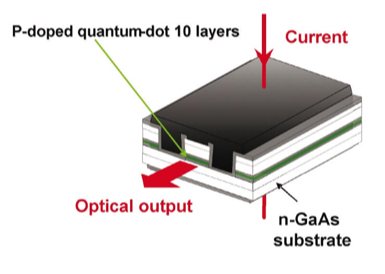 |
| Fig. 1 Laser structure |
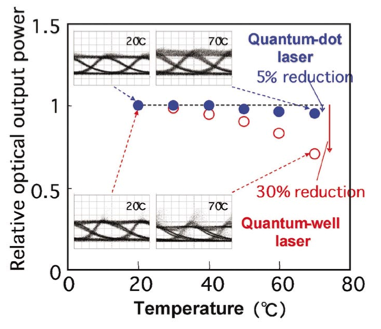 |
| Fig. 2 Temperature dependence of 10 Gb/s modulation characteristics |
Development of Nano-Photonic and Electron Devices
| First Observation of Single Photon Pulses in the Telecommunication Band |
| Single photon sources are key-devices of not only quantum encryption but also a quantum operation system. We have been studying single photon sources in the telecommunication band in order to realize a quantum communication network. Single photon sources using a quantum dot have been developed, and single photon emission at the technologically important wavelength of 1.55 Êm has been demonstrated for the first time in the world. [Univ. Tokyo, FUJITSU] |
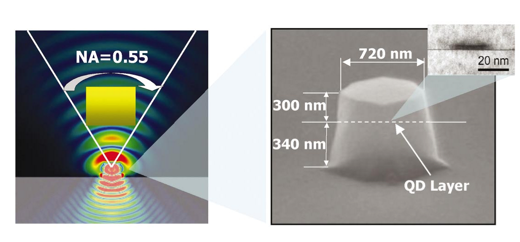 |
| Fig. 1 Single photon sources |
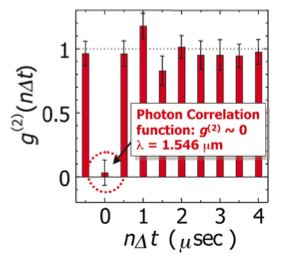 |
| Fig. 2 Correlation function of single photon pulses |
Development of Nano-Photonic and Electron Devices
| Efficient Single Photon Genaration Using Photonic Crystal Nanocavities |
| High-efficiency single photon sources are crucial light sources in quantum cryptography systems. We have succeeded in demonstrating efficient single photon generation from single InAs quantum dot coupled with a photonic crystal nanocavity. This was achieved thanks to nanocavity effects, an enhancement of spontaneous emmision rate and an increased out-coupling efficiency. This is one important milestones toward real applicaiton of quantum-dot single photon sources. [Univ. Tokyo, Stanford Univ.] |
|
|
| Fig. 1 SEM image of PC nanocavity |
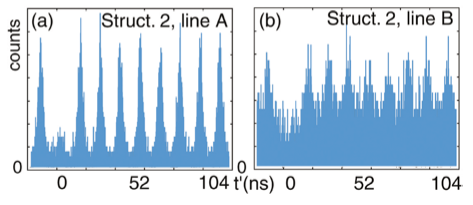 |
| Fig. 2 Second-order photon correlation functions for a QD coupled with a nanocavity mode (a) and for a QD without the coupling (B) |
|

